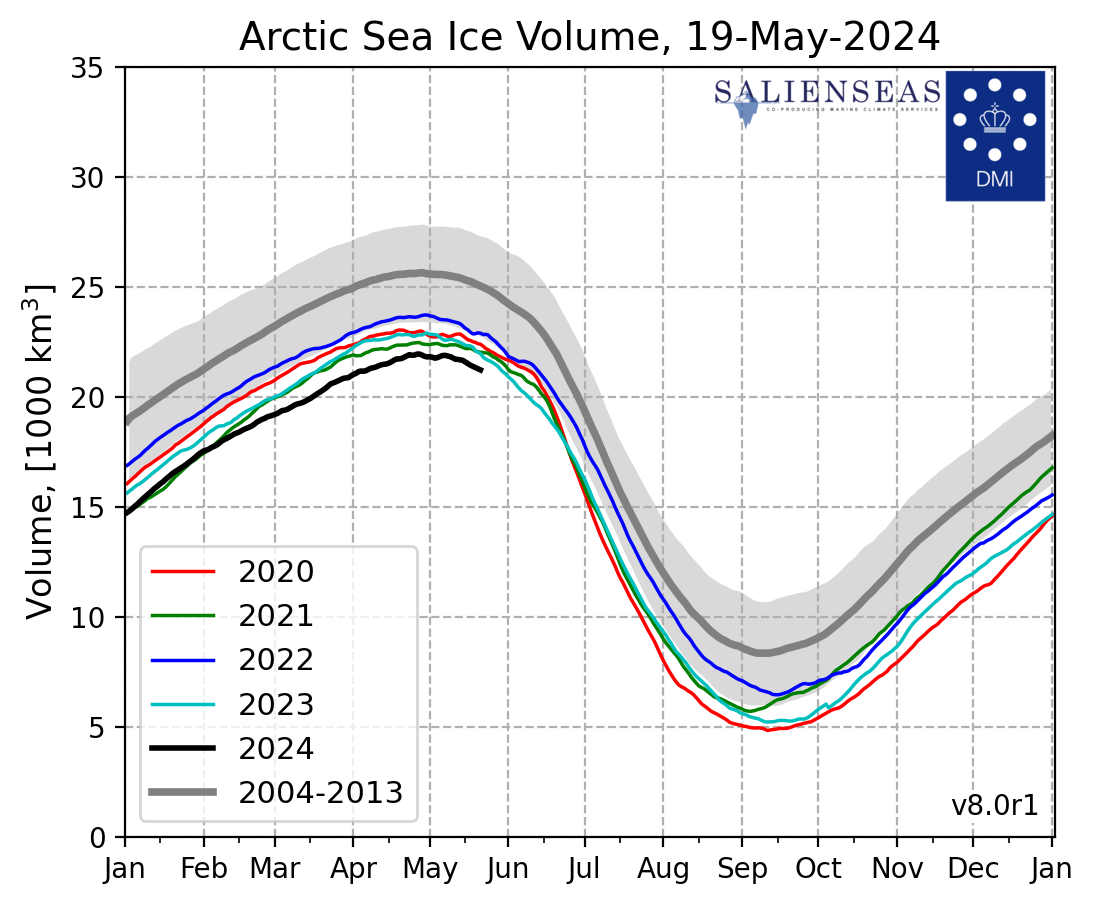....And it was not a good year.
As long-time readers know we focus on sea ice thickness and volume rather than extent. This is because of the way ice melts. Just as the ice in your glass will last longer in block form than as thin shavings, the Arctic ice better resists melting the thicker it is.
We might have a winter where the polar vortex stays nice and tight around the Arctic Circle, keeping the colder air over one (large) spot and have less, sometimes far less ice extent than in winters where the circumpolar winds break down allowing the cold air to head south, forming a thin skin of ice over a greater area.
The problem is, that thin skin begins to melt as soon as the sun returns to the Northland. The thicker ice melts slower and has a better chance of becoming second-year or multi-year ice which is the stuff that has the best chance of resisting the warm air of summer.
In the map below all the purples will be liquid water by August.
Three quick features this year's map points out: 1) In Hudson's Bay—on the right left side in this view—large areas did not really freeze this season. 2) the waters to the east west of Greenland and near Novaya Zemlya—the archipelago centered around the long island northwest northeast of Murmansk/Kola Peninsula barely froze. 3) The plug at top of the map, the Bering Strait came through okay, important because summer storms tend to blow across the top of the world from that point to the Fram Strait between Greenland and Svalbard. Unfortunately that plug did not form this season and any storms coming across the ice cap are likely to force ice out through the Fram Strait into the Norwegian Sea/open ocean. Not good.
From the Danish Meteorological Institute, May 19:

Additionally, the graph of the season's volume is showing the lowest accumulation in at least the last five years:

As noted above, not good. One possible bright spot is, if we are correct in our guess that the extraordinarily high temperature anomalies from 2023 - 2024 will dramatically decrease, the ice should have a shot at thickening up in the 2026 -2027 season. If interested see May 2/May 5's:
UAH Global Temperature Update: April Sees New High Temperature Anomaly For The Satellite Era